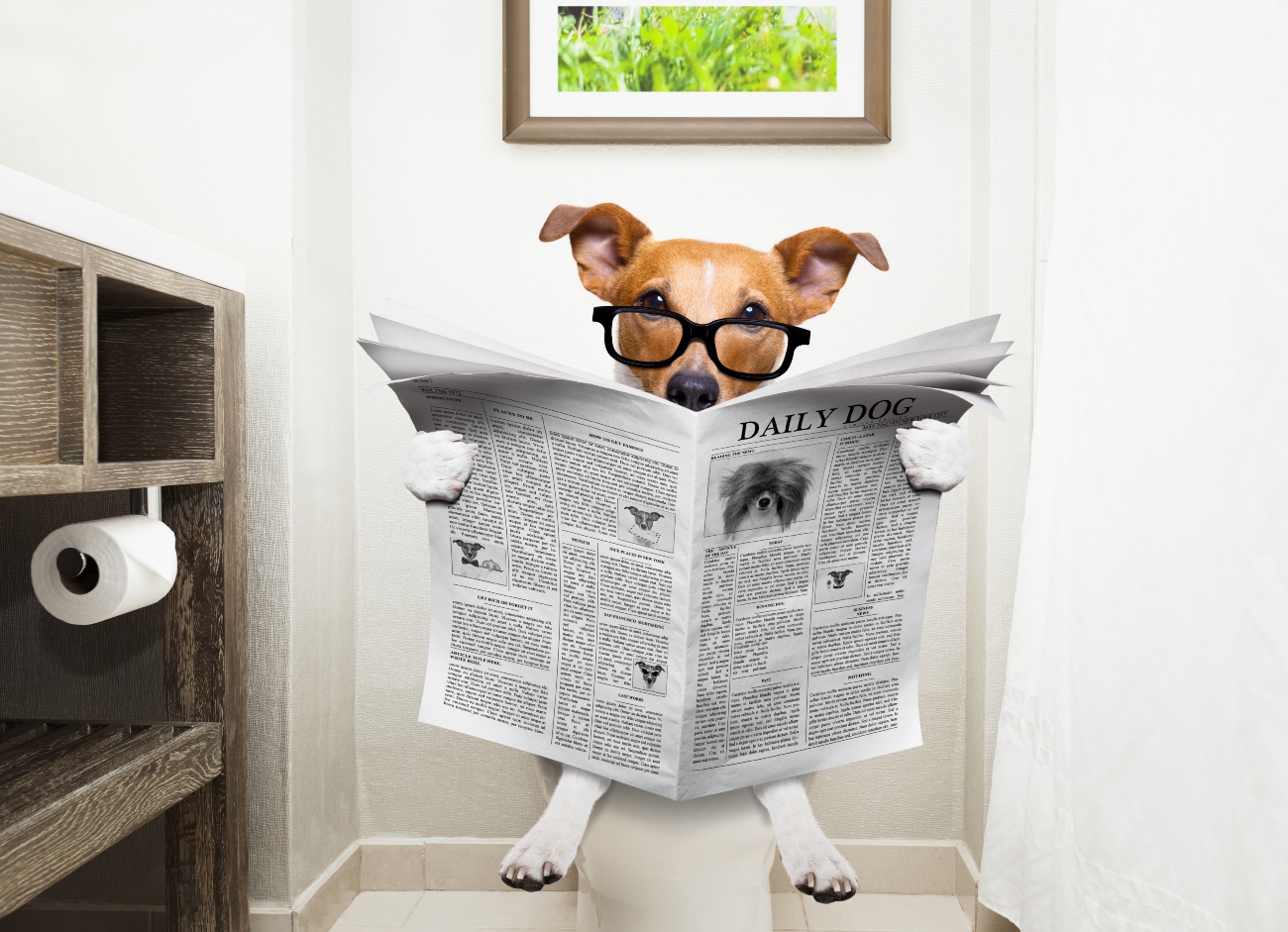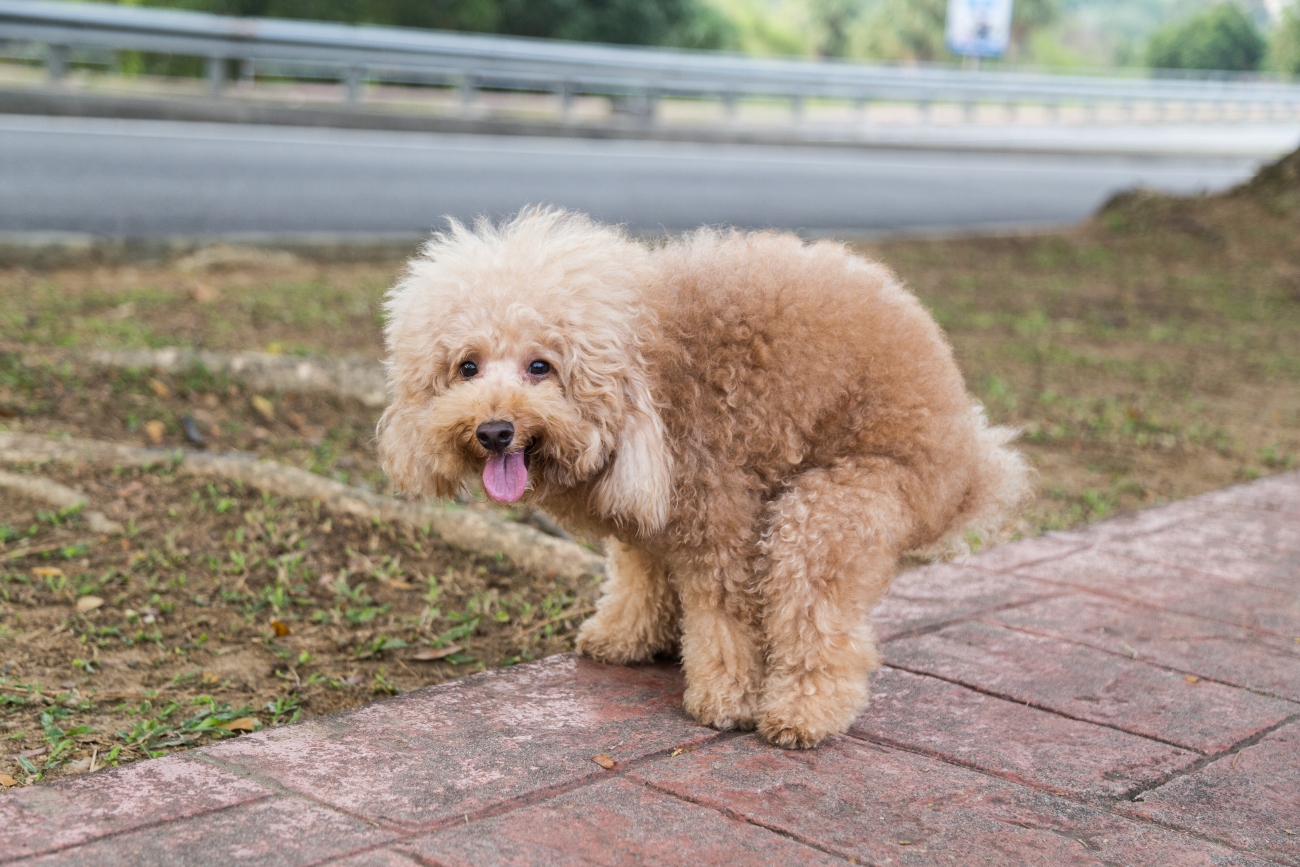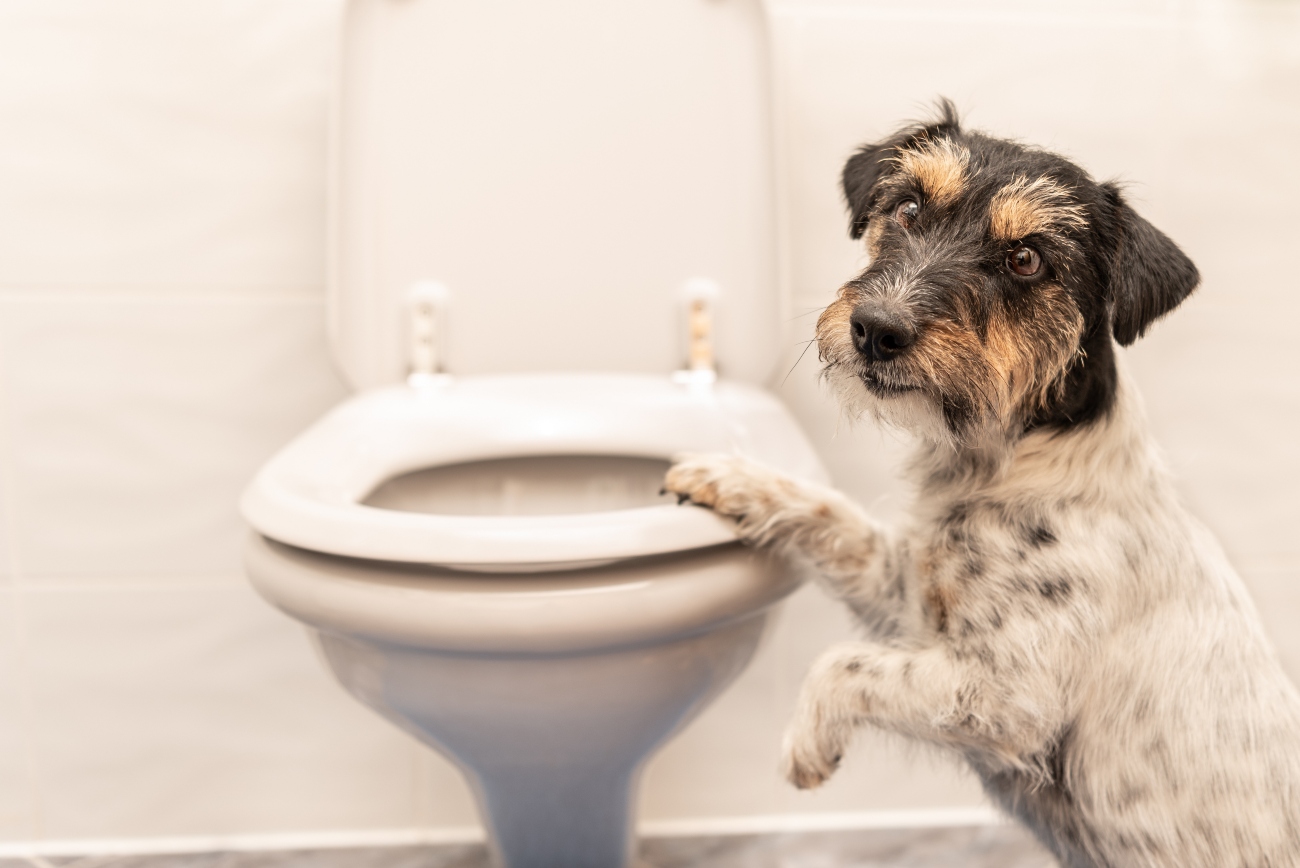
No more messes: your ultimate guide on how to toilet train a dog successfully
1st May, 2023
Welcome to your ultimate guide on how to toilet train a dog successfully. If you're tired of cleaning up your dog's messes and are ready to teach them the proper place to relieve themselves, then you've come to the right place.
In this comprehensive guide, we'll cover everything from the importance of house training for dogs to how to re-toilet train an older dog.
So, let's dive in and get your furry friend on the path to better bathroom habits.
Introduction to training your dog to go to the toilet
Toilet training is an essential part of raising a well-behaved, happy dog.
Properly toilet trained dogs are less likely to have accidents in the house, which can save you time, money, and stress.
Plus, it's an essential skill for any dog that will spend time inside, whether they live in an apartment, a house with a yard, or are simply visiting friends and family.
House training & avoiding 'accidents' is an ongoing process that requires patience, consistency, and positive reinforcement.
By using a step-by-step approach and understanding the key factors to consider before starting, you'll be able to toilet train your dog effectively and efficiently.
Whether you're working with a puppy or an older dog, this guide will provide the tools and advice you need to achieve success.
Importance of toilet training for dogs
Toilet training is crucial for several reasons.
First and foremost, it helps maintain a clean and sanitary living environment for both you and your dog.
No one wants to deal with the mess that comes with a dog that hasn't been toilet trained.
Additionally, it can help prevent costly damage to your home, such as ruined carpets or flooring. If you've ever had your furry friend have an 'accident' on your newly laid carpets in the living room... you'll know what we mean.
Toilet/house training also contributes to your dog's overall well-being.
It provides them with a clear understanding of what is expected of them, which can reduce stress and anxiety.
A well-trained dog is less likely to exhibit behavioural issues, such as excessive barking or destructive chewing of chair legs and just about anything grounded to the floor.
A typically un-talked about issue with a lack of house training is that if your dog is too anxious to go to the toilet comfortably, they could potentially suffer from gastrointestinal issues as well.
Key factors to consider before starting toilet training
Before you dive into the step-by-step guide on toilet training a dog, there are a few key factors to consider.
First, take into account your dog's age.
Puppies have smaller bladders and less control over their bodily functions, making the process more challenging.
However, this doesn't mean it's impossible. With patience and consistency, you can toilet train a puppy as well as an older dog.
Another factor to take into consideration is your dog's breed.
Some breeds are more challenging to toilet train than others (Chow Chow, Bulldog, Dachshund breeds have been known to not initially take to well to commands), so it's essential to research your dog's breed to understand any potential challenges you may face which can help to limit expectations.
Consider your dog's past experiences. If your dog has had negative experiences with being commanded to go to the toilet, such as harsh punishment or a lack of guidance, it may take more time and effort to retrain them.
Keep these factors in mind as you embark on your journey of a mess-less future.
Acknowledging when your dog needs to go to the toilet
As a dog owner, understanding the tell-tale signs of when your furry friend needs to answer nature's call is a crucial first step for maintaining a happy and healthy relationship with your pet.
Firstly, pay close attention to your dog's body language.
Dogs often exhibit specific behaviours when they're feeling the urge to go. These can include:
- Consistently sniffing the ground in a specific spot
- Circling
- Whining
- Suddenly becoming restless & agitated, and possibly coupled with a few looks over to you, the owner.
If you notice any of these signs, it's time to take your pooch for a bathroom break. Monitoring your dog's eating and drinking habits can also provide valuable insight into their bathroom schedule. Generally, dogs need to relieve themselves within 30 minutes to an hour after eating or drinking.
Keeping track of when your dog consumes food and water along with the tell-tale signs they might demonstrate above can help you predict when they'll need to go.
Understanding how to know when my dog needs the toilet is all about being attentive to their behaviour, establishing a consistent schedule, and considering their individual needs.
By doing so, you'll not only make your pet more comfortable but also strengthen the bond between you two which will make the next step in your accident-free journey a lot easier.
Step-by-Step guide on toilet training a dog

- Establish a routine: Set a schedule for feeding, playtime, and toilet breaks. This helps your dog understand when it's time to go, and consistency is key to a well house-trained dog.
- Choose a designated bathroom spot: Pick a specific area for your dog to use as their bathroom, whether it's a particular spot in the yard or a designated indoor area with a training pad.
- Take your dog out frequently: In the beginning, take your dog out every 1-2 hours, gradually increasing the time between outings as they gain bladder control. Praise them when they successfully go in the designated spot.
- Use a cue word: Use a consistent command, such as "go potty," to cue your dog to use the bathroom. Reward them with praise and treats when they successfully follow the command.
- Monitor for signs: Keep an eye out for signs that your dog needs to go, such as sniffing, circling, or whining. When you see these signs, quickly take them to the designated spot and give the cue word.
- Clean up accidents promptly: If your dog has an accident, clean it up immediately with an enzyme-based cleaner to remove the smell and prevent future accidents in the same spot.
- Be patient and consistent: Training a dog to be house trained takes time, so be patient and stick to the routine. Consistency is key to training your dog to do pretty much anything, so don't rush it!
How to toilet train an older dog: tips and advice
Training an older dog/adult dogs follow the same basic principles as training a puppy, but there are some additional considerations to keep in mind.
Here are some tips and advice on how to toilet train an older dog:
- Be patient: Older dogs may take longer to learn new habits, so be patient and give them the time they need.
- Address any health issues: Check with your veterinarian to rule out any medical issues that may be contributing to accidents, such as a urinary tract infection or incontinence.
- Gradually adjust their routine: If your older dog is used to going indoors, slowly transition them to going outside by moving their designated bathroom spot closer to the door over time.
- Reward good behaviour: Older dogs may not respond as quickly to praise and treats as puppies do, but they still benefit from positive reinforcement. Reward them for successfully using the designated bathroom spot.
- Consider using a crate: Crate training can be helpful for older dogs, as it provides a safe, confined space where they are less likely to have accidents. Be sure to choose a crate that is the appropriate size for your dog, allowing them to stand up and turn around comfortably.
Re-toilet training an older dog: overcoming challenges
If you're faced with the task of re-toilet training an older dog that has regressed in their bathroom habits, don't worry – it's possible to get them back on track.
Here are some tips for overcoming challenges when re-toilet training an older dog:
- Identify the cause of the regression: Before you can address the issue, you'll need to determine why your dog has regressed in their toilet training. Common causes include changes in routine, stress, or medical issues.
- Address the underlying issue: Once you've identified the cause of the regression, take steps to address it. This may involve adjusting your dog's routine, providing additional support to help them cope with stress, or consulting your veterinarian for medical advice.
- Re-establish a consistent routine: Just like when you first toilet trained your dog, consistency is key to success. Re-establish a routine for feeding, playtime, and bathroom breaks, and stick to it.
- Reinforce good behaviour: Use positive reinforcement, such as praise and treats, to reward your dog for successfully using the designated bathroom spot.
- Be patient: Re-toilet training an older dog can be a time-consuming process, so be patient and give your dog the time and support they need to relearn this skill.
Common mistakes to avoid during toilet training
- Punishing your dog for accidents: Avoid punishing your dog for accidents, as this can create fear and anxiety, making toilet related training more difficult. Instead, focus on positive reinforcement and praising them for getting it right. Positive reinforcement creates a more stress-free environment for your dog and remember... Your first few weeks will come with a few mistakes, and it's perfectly normal!
- Inconsistency: Stick to a consistent routine and use the same cue words and bathroom spot to avoid confusing your dog.
- Expecting too much too soon: Training any new habit takes time, especially for puppies or older dogs. Be patient and remember that progress may be slow.
- Not monitoring for signs: Keep an eye out for signs that your dog needs to go, such as sniffing, circling, or whining, and respond promptly to avoid accidents.
- Not cleaning up accidents properly: Use an enzyme-based cleaner to remove the smell and prevent your dog from being drawn back to the same spot for future accidents.
Signs of a successfully trained dog
- Fewer accidents: As your dog becomes more comfortable with their bathroom routine, you should notice a decrease in the number of accidents.
- Recognising the cue word: Your dog will begin to understand the cue word and respond by using the bathroom in the designated spot.
- Signaling when they need to go: As your dog becomes more confident in their toilet habits, they may start to signal when they need to go by whining, scratching at the door, or exhibiting other signs.
- Holding it for longer periods: Over time, your dog will be able to hold it for longer periods between bathroom breaks, demonstrating increased bladder control.
Troubleshooting toilet training issues
If you're experiencing difficulties with toilet training, take a step back and assess the situation.
- Are you following a consistent routine?
- Are you using positive reinforcement and avoiding punishment?
- Are there any underlying medical issues that could be causing a problem?
By identifying the issue and addressing it, you can get your dog to go to the toilet without anxiety being attached to whole situation.
Maintaining good toilet habits

Training a dog to know how and when to go to the toilet is an essential part of responsible pet ownership.
With patience, consistency, and positive reinforcement, you can successfully teach your furry friend good bathroom habits.
And remember, even once your dog is fully toilet trained, it's good to maintain a consistent routine and continue to reinforce good behaviour.
Now that you have the knowledge and tools to toilet train your dog successfully, it's also a good time to think about protecting their health.
If you would like to talk to one of our senior dog insurance specialists, you can get in touch with us on 0333 003 2271.